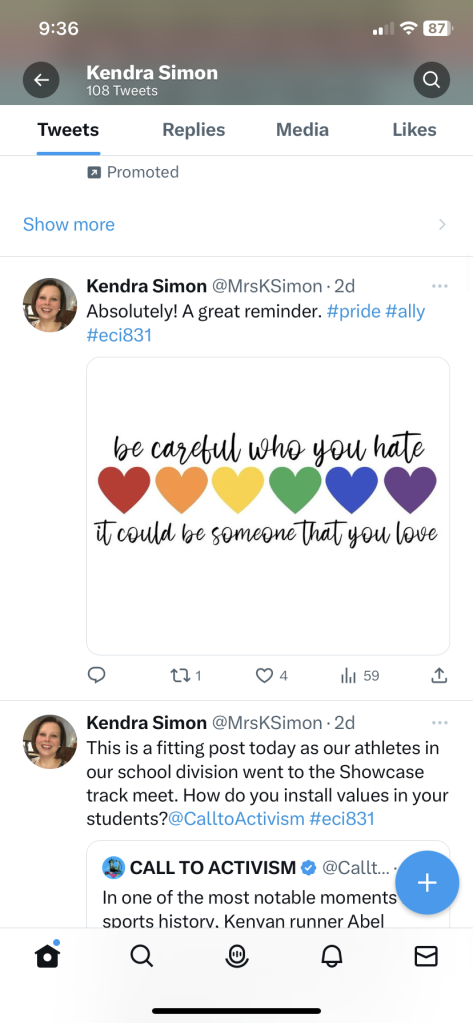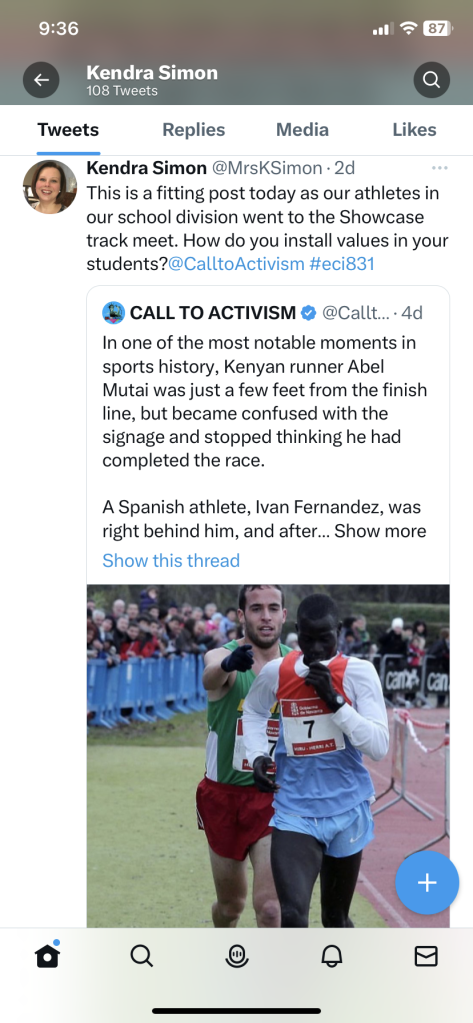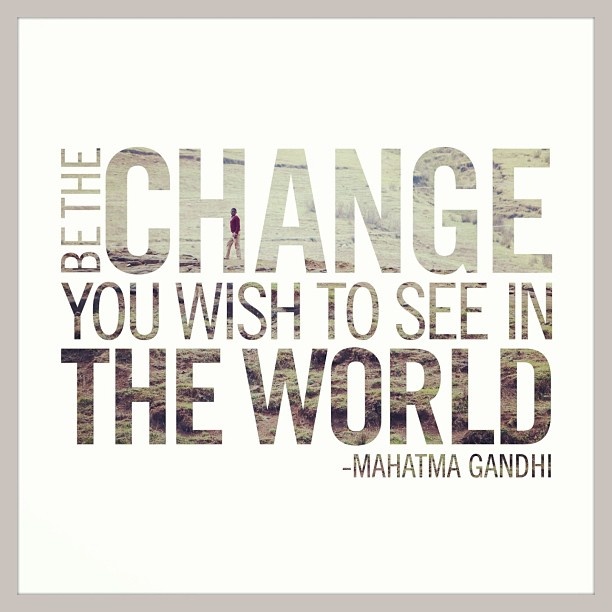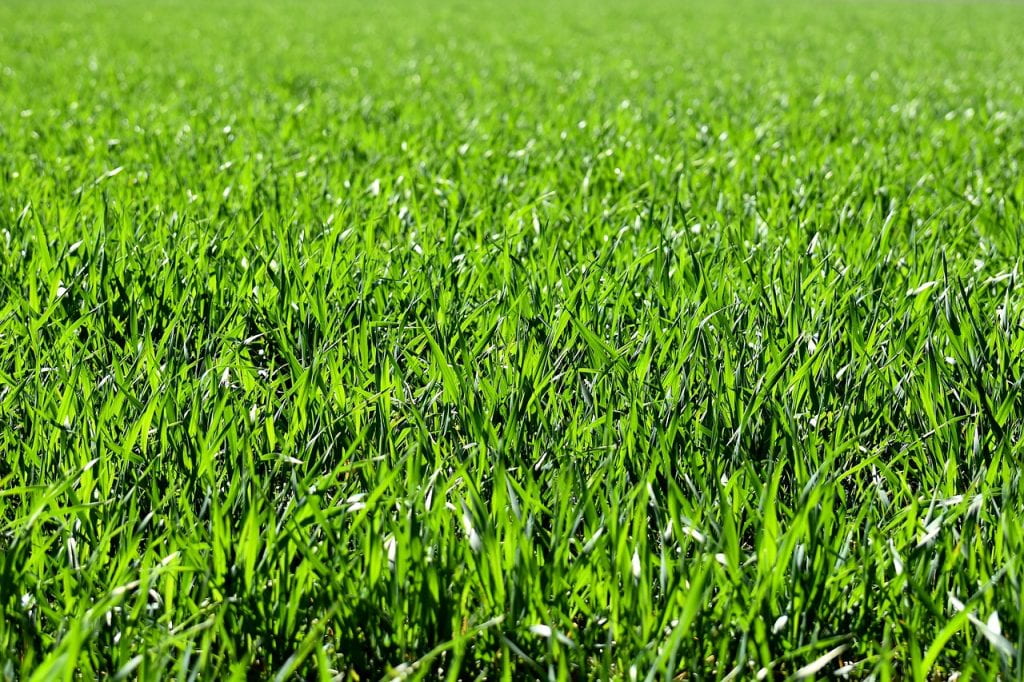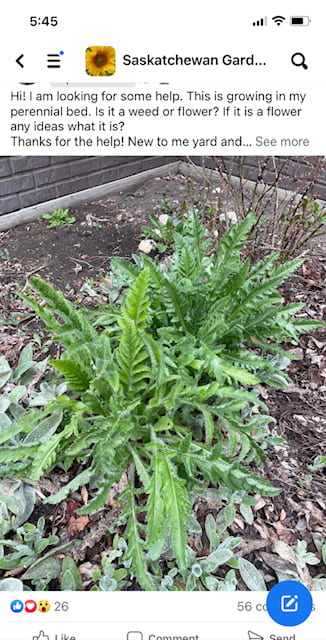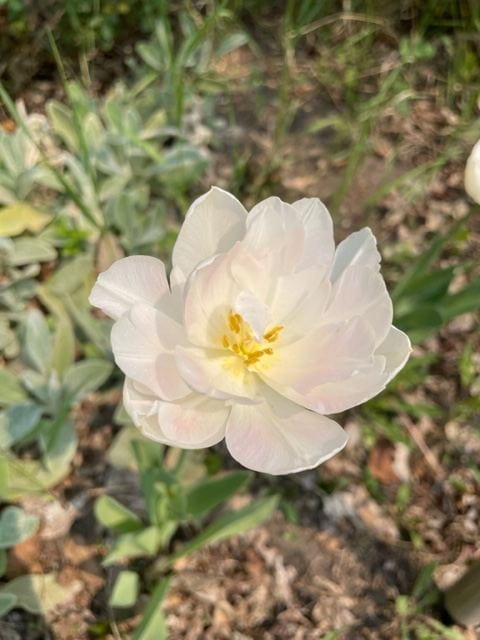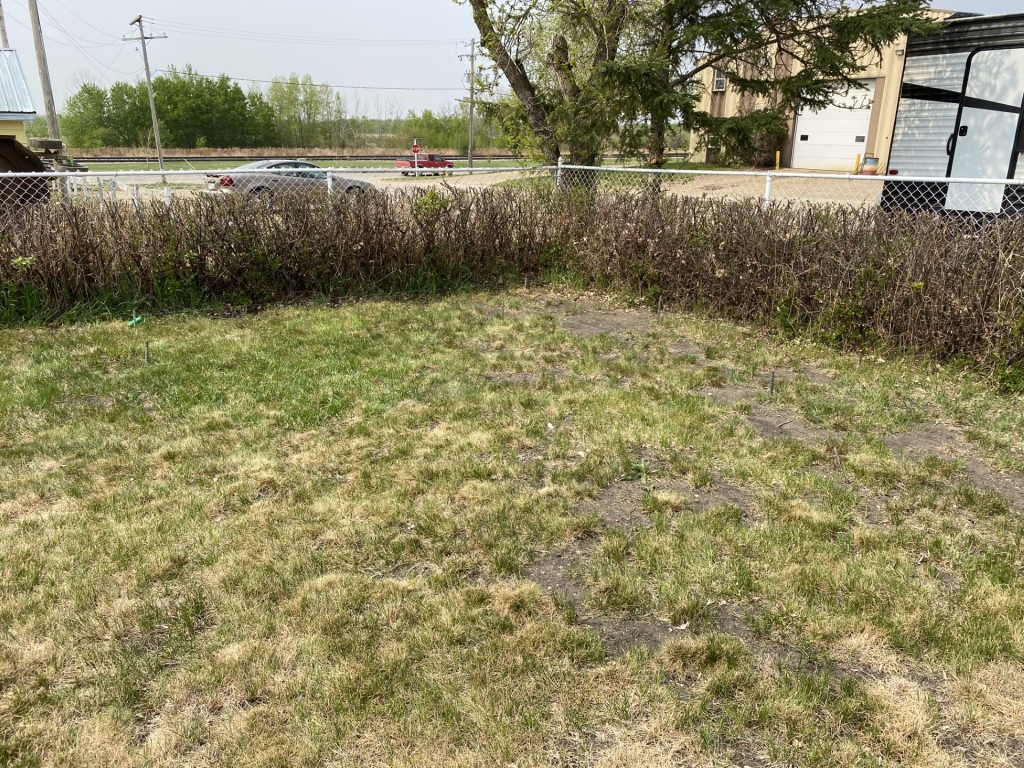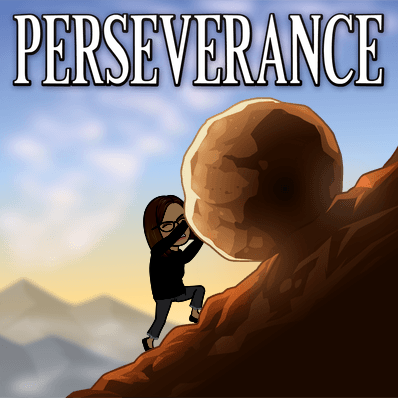
What better a day to start building a raised garden bed then in +30 degree weather, right? However, June is here and the learning and building must go on! So after a slow start to the morning, I began my raised garden build. As I mentioned in my previous post, I am going to be building a garden bed that is 12 feet long on each side using 6 foot cedar fence boards. It will be 3 feet wide on each end so I can easily reach the plants. Although, I found many different ideas and plans online, I wanted to create my own drawing and design to fit a certain area in our yard. Here is a reminder of my design:

I spent some time looking at raised garden bed videos and plans to decide on how to tackle this project. I especially liked this video as it had similar materials I chose and the look I wanted.
The website trees.com had a great read about 24 DIY Raised Garden Bed Plans & Ideas That You Can Build In Your Garden. Each plan shared the difficulty level and when you clicked on the plan you liked the materials and instructions were included. This would have provided me a great way to start my building but instead I kind of went rogue with my learning and designed my own raised bed plan. After gathering all of my materials, this is what I used for the build:
- 32 cedar fence boards (plus a few more for errors)
- decks screws
- old scrape boards from treated wood to secure the fence boards
- cordless impact drill
- compound mitre saw
- measuring tape
- pencil
- lots of water
- a great supervisor and supporter! (my personal husband)
To start, I began by cutting my end boards from 6 feet into 3 feet lengths.


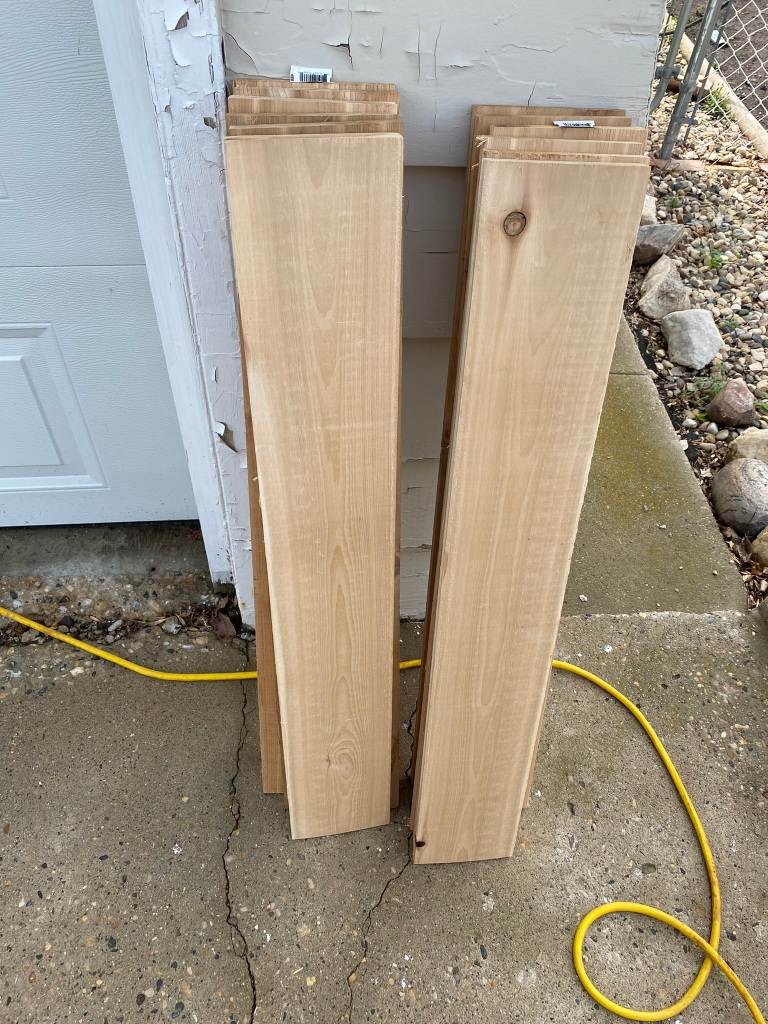
Then I started to connect the sections together. For this, I used some treated wood scraps that were in our garage as anchors for the corners and to connect the 6 foot boards.


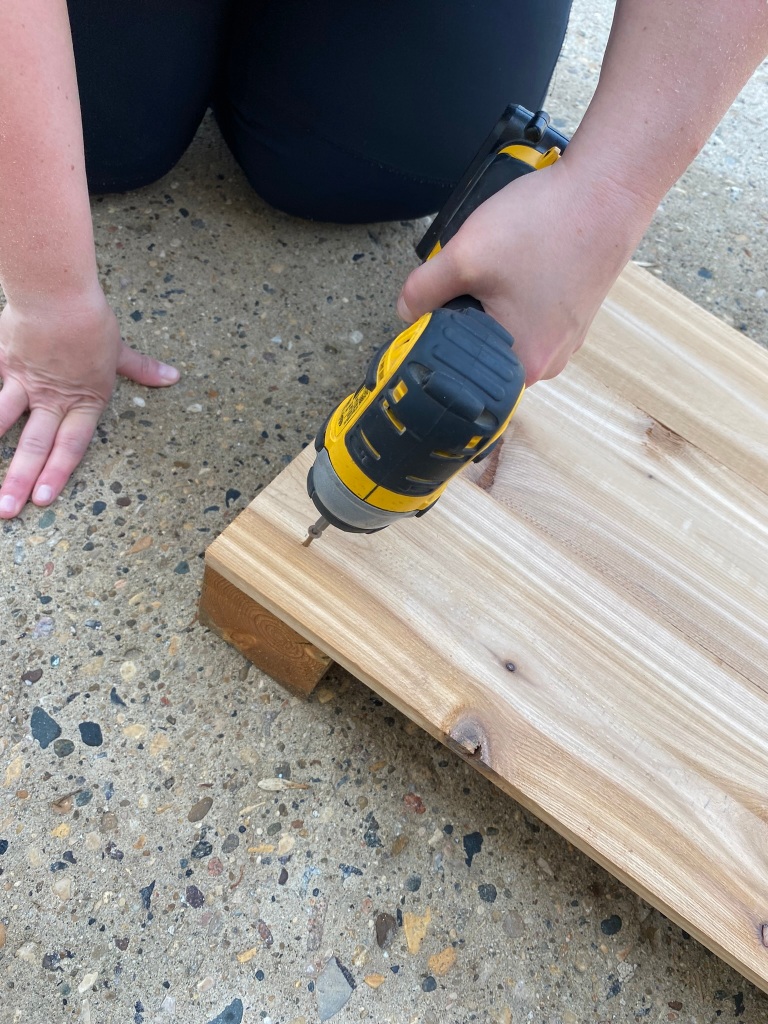
I started the build on our driveway but felt it was going to be too heavy to continue there so I moved over to the area I wanted the bed to be placed in. In hindsight, I should have continued to build on the concrete as it was a more leveled surface. Something to remember for future builds!

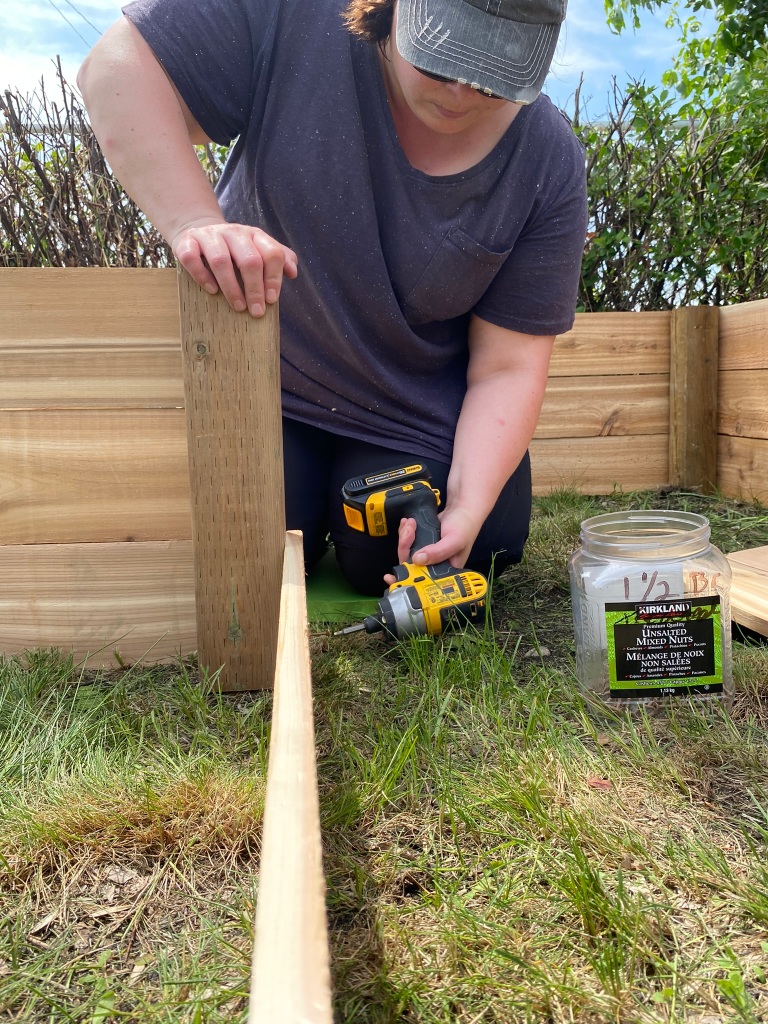
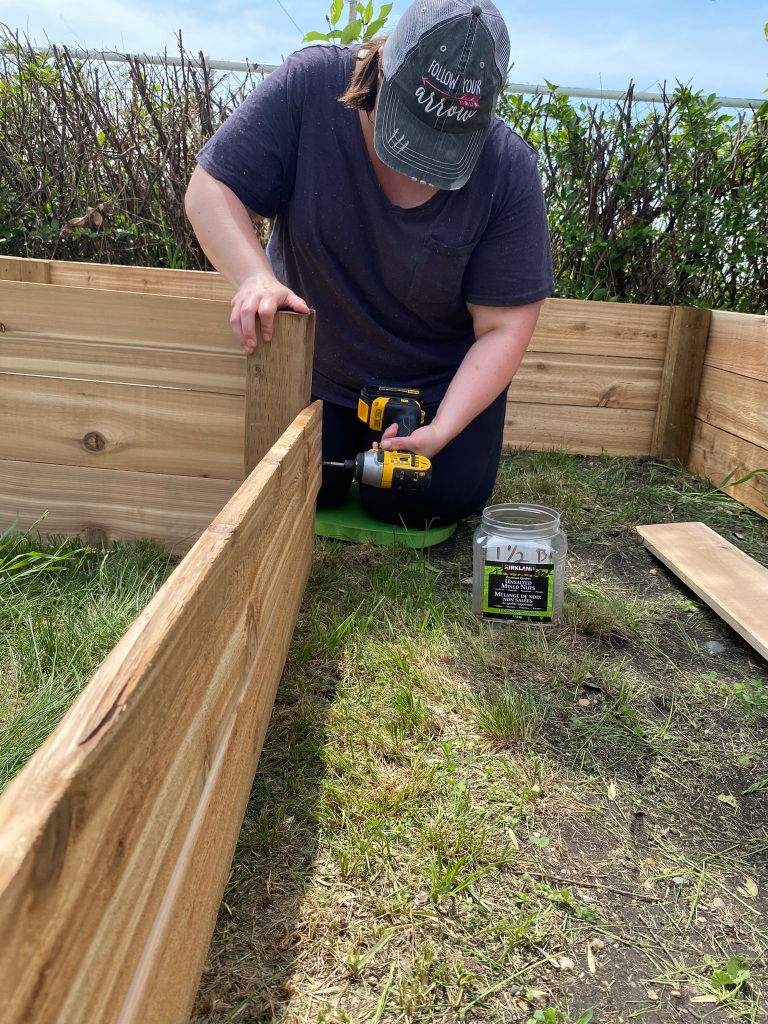
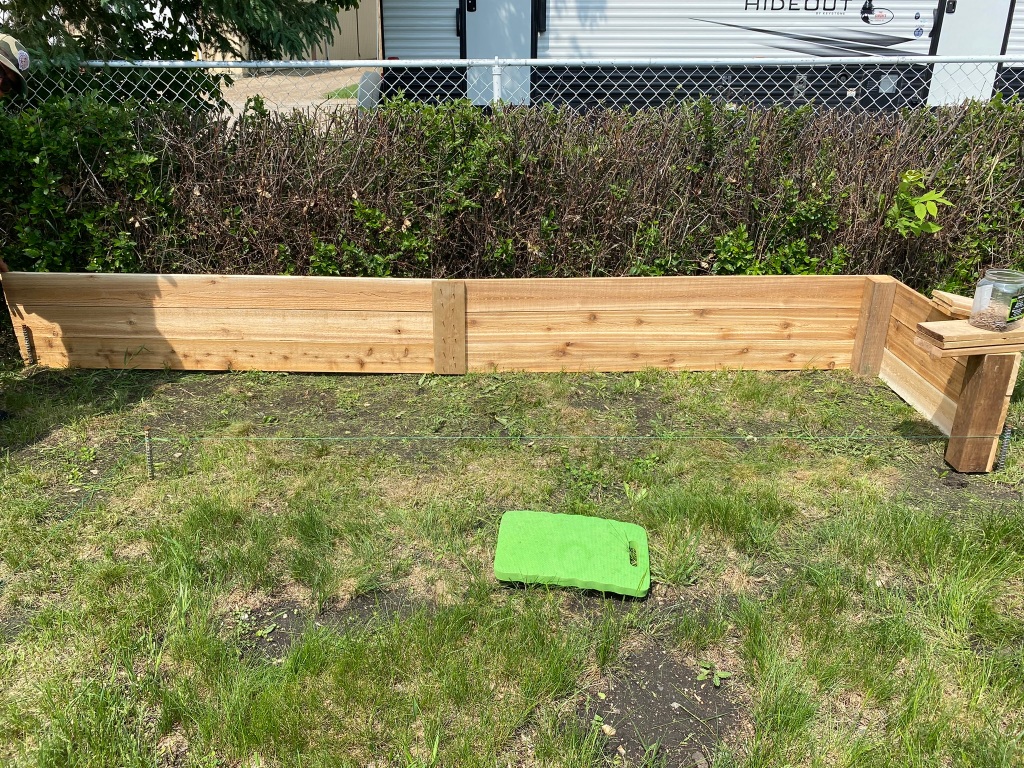


The build was going quite well, however, I could feel my husband cringe every time I used the impact drill! I spent most of my time the previous week practicing on the mitre saw and I definitely should have spent a lot more time using the drill as you can see in this video!
This build was a two person project. I needed support holding boards and piecing each section together. The main part of the garden bed took several hours to build but seemed to go together well.
After a short break, I was back at it! Time for the finishing top caps. I felt very optimistic as I had practiced making angles the week before and they seemed to work out. This video was a great watch for learning how to make angles. Unfortunately, it didn’t give me any tips for how to correct errors when cutting angles.
Well… I soon discovered this was not going to be a smooth end to my build! Angles became my nemesis! They started out well but then they no longer seemed to go together. I had to be careful as I was nearing the end of my supply of cedar boards.

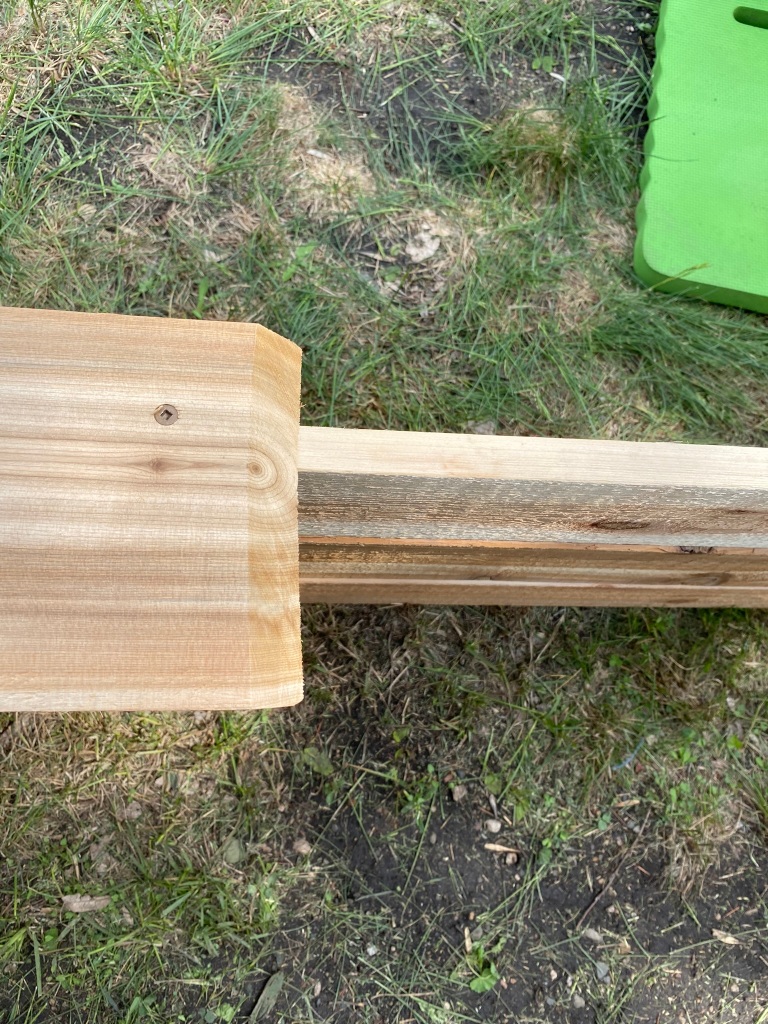
Slowly my angles began to no longer fit quite right! I was persistent in wanting to do it myself so my husband tried to offer support and advice without taking over my project, kind of like a teacher in the classroom would! Unfortunately, I had to enlist his help to save the remaining boards so I wouldn’t run out!
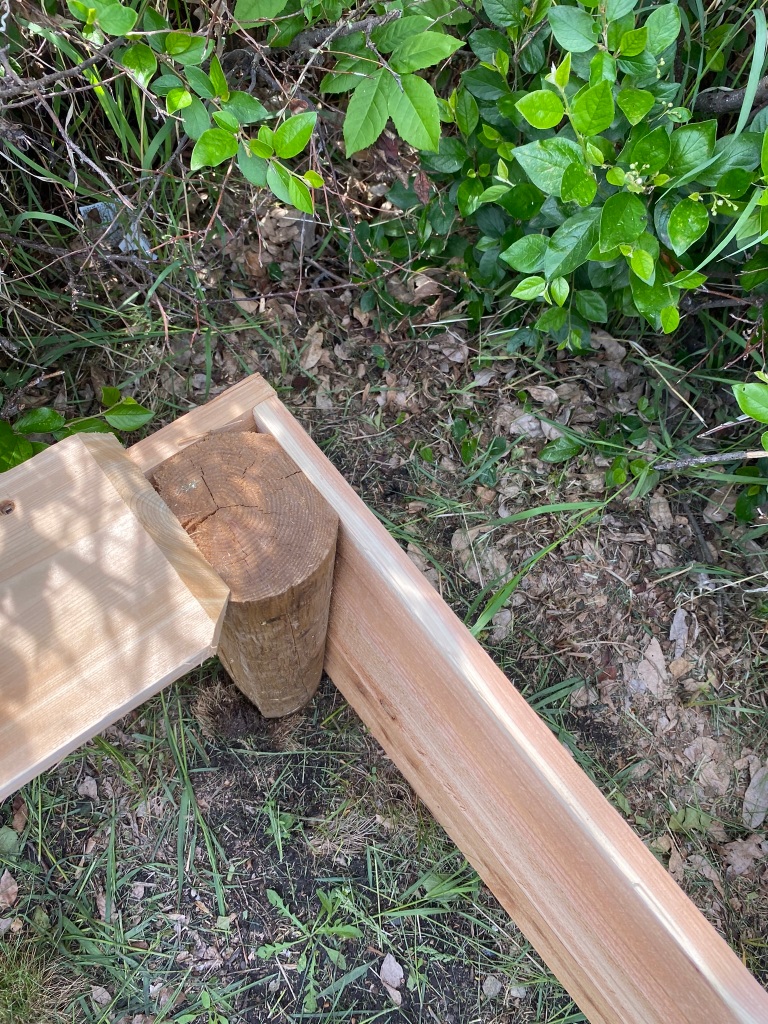

With a little help, I pieced together the remaining corners and accepted defeat regarding making perfect angles! Oh well, I do need to put my pride aside and recognize that I am a rookie in this area. Finally after a long, hot day my build was complete!
A few things that I am taking away from my learning this week are:
- Take into account that watching videos and reading articles does not equal being able to develop a skill.
- Developing a skill takes time and practice
- Always have extra material on hand!
- Be aware of uneven ground and boards that have warps in them
- Give yourself lots of time! I thought it would only take half a day but it actually required the full day to build
- Give yourself grace as you learn a new skill! Be proud of what you accomplished without looking at all the flaws!
I did find that watching videos for me was much easier than reading how to build a raised garden bed. I gained lots of tips about the build such as materials and how wide to make it! Up next, I will be looking into how to fill the raised bed, what type of soil will work best and what kinds of plants I should put in the bed.
If you have any recommendations on filling my raised garden bed, I would love to hear them!
Thanks for reading and watching my raised garden bed build!
-Kendra

